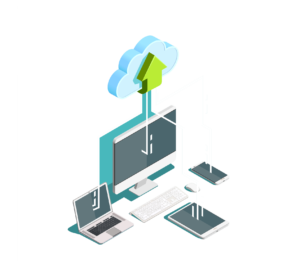Successful migration to the cloud often means introducing and adopting a new common language throughout your organization. But there are certain obstacles in the process that can be costly. Or they can be so painful that they won’t let you go any further.
About 95 percent of IT professionals in a survey said they had migrated critical IT applications and infrastructure to the cloud in the past year. However, only 5 to 7 percent of the world’s workloads have been shifted to the cloud.
Most organizations use cloud apps, but these apps make up less than 10 percent of their portfolios, and in most organizations, less than 10 percent of their total budget.
At the moment, we see companies that want to catch up on implementing their cloud strategies. Each IT service provider generally addresses four key areas when moving infrastructure to the cloud:
• Prepare for migration
• Special technical considerations
• Testing in the target cloud environment
• Discontinuation of production
These are the things you need to do, and as your client’s trusted advisor, you can add value to this process in many ways and ultimately protect their interests. But what are the key things you should avoid when migrating?
Pitfall to Avoid 1: No level C sponsorship
The cloud is both a cultural and technical change. Moving to the cloud can fundamentally change how your business operates in areas such as budgeting, day-to-day operations, end-user productivity, talent acquisition, and growth.
Managers and the IT department will benefit from the additional cloud training as a critical investment for their long-term success. During the acute transformation phase of their efforts, consultants may also be needed to make sure the IT department knows how to make the best use of the new cloud capabilities and modernize applications to take full advantage of cloud services.
These types of organizational changes will be most successful with proper sponsorship and management commitment. Help the IT company be a better business partner by helping them think through both the positive and potential adverse business effects of moving to the cloud. If the business differentiators, risks, and critical drivers are not clear, and business changes are not articulated for the company’s management, it can be a very bumpy road.
Pitfall to Avoid 2: Error in identifying the problem
The first mistake made by companies deciding to migrate to the cloud is to identify the problem. You need to evaluate why you need a cloud; is it just because everyone uses it?
Many applications do not need the cloud or that may not work well in the cloud. The use of the cloud is not possible with such applications.
If you’ve already identified that your apps will perform better in the cloud and you want to reap the benefits of cloud services, do so!
Many companies already use cloud services but are not satisfied with their current service provider. It is also a key aspect to be assessed. It would be best if you listed areas of dissatisfaction with the current system; these are the areas that your solution must cover.
Developing a cloud strategy and preparing a list of key performance areas will help you decide on goals and reduce the possibility of errors.
The success of the migration will depend on how well you identified the problem.
Pitfall to Avoid 3: Wrong choice of a service provider
There are many cloud migration service providers on the market. Finding the best one becomes difficult.
It is the best idea to choose a service provider that can understand your concerns. They should be able to suggest solutions to your basic set of problems.
Most cloud service providers are domain or company-specific. Therefore, it is essential to identify a service provider with experience in migrating to the cloud for your services and applications.
Pitfall to Avoid 4: Planning a single migration to the cloud
Once an organization has committed to moving to the cloud, it wants to do everything right away. But that is not right.
Many companies use a hybrid model that facilitates the transition from a business and technical point of view, so it is recommended to opt for phased cloud adoption. By migrating specific data pieces in stages, you can ensure your enterprise is up to date with the provider’s cloud solutions. It is recommended that you migrate irrelevant or test data first. Then you can go to critical and sensitive business data, minimizing risk.
Now is the perfect time to figure out which apps to migrate and what apps can be replaced. The core software can be moved, but if your server has a squeaky old custom CRM system, it is worth rethinking. Basically, setting up new software before fully deploying and testing your infrastructure, use temporary resources to make it possible.
The roadmap is the key to any successful implementation. The cloud brings with it new systems and software that affect the workflow. This, in turn, requires team training and communication to be included in the plan. Iterating the change is crucial.
Pitfall to Avoid 5: Cost underestimation
Of course, one of the most significant advantages of migrating to the cloud is savings.
With cloud-based applications, businesses don’t have to pay IT staff, for things like managing email, taking care of expensive data centers, buying as much hardware as possible, and keeping the application running.
However, the problem is that migrating to the cloud also comes with a cost, as managers often overlook moving storage costs.
The most expensive part in the migration process is the movement of storage or data. It might, at times, require a 100 GB database. Cloud service providers typically don’t charge for data movement, but this can take weeks or months if huge. You want to estimate how long the data will take to move in your migration project.
Cloud access comes with upfront costs. There is no doubt about it. When properly configured and designed, cloud storage can be significantly cheaper than what we do locally today. It costs more people to move it to the cloud. It can also be costly to forget to reallocate people and resources.
It would be best to separate the running costs and workforce costs associated with the operation you previously conducted on-site. If you limit your data center needs, can you cancel or sublet the lease and find out how you use the employees who ran it for you. Besides, managers may not take into account how distracting their IT team will be during the migration.
IT specialists who would otherwise be able to focus on business-specific tasks will work on the migration. This will slow down or delay other projects.
Of course, migration promises that once implemented, these same workers will have more time to free themselves from a lot of old, down-to-earth tasks so they can focus on differentiation and business advantage.
Pitfall to Avoid 6: Cloud security neglect
Data security must be at the heart of your cloud migration strategy. We’ve seen companies overlook the need to protect their data during the transition, as well as those who are so concerned about customer sensitive data that it ultimately delays the migration to the cloud. Think innovative and strategic to deal with it, and learn about the pros and cons of data security to get you through the transition.
For example, when moving confidential data, we will look at the client’s servers’ segregation to ensure compliance with the audited information.
Consider the consequences of data stored in a private, hybrid, or public cloud – work closely with your cloud partner to evaluate the most hassle-free option.
Businesses around the world are shifting to the cloud because it has advantages. Before a business can take advantage of cloud services, however, it is imperative that the migration to the cloud is flawless.
As a business, you don’t need to know all the technical aspects of migrating to the cloud. So, hire the best cloud migration service provider!







